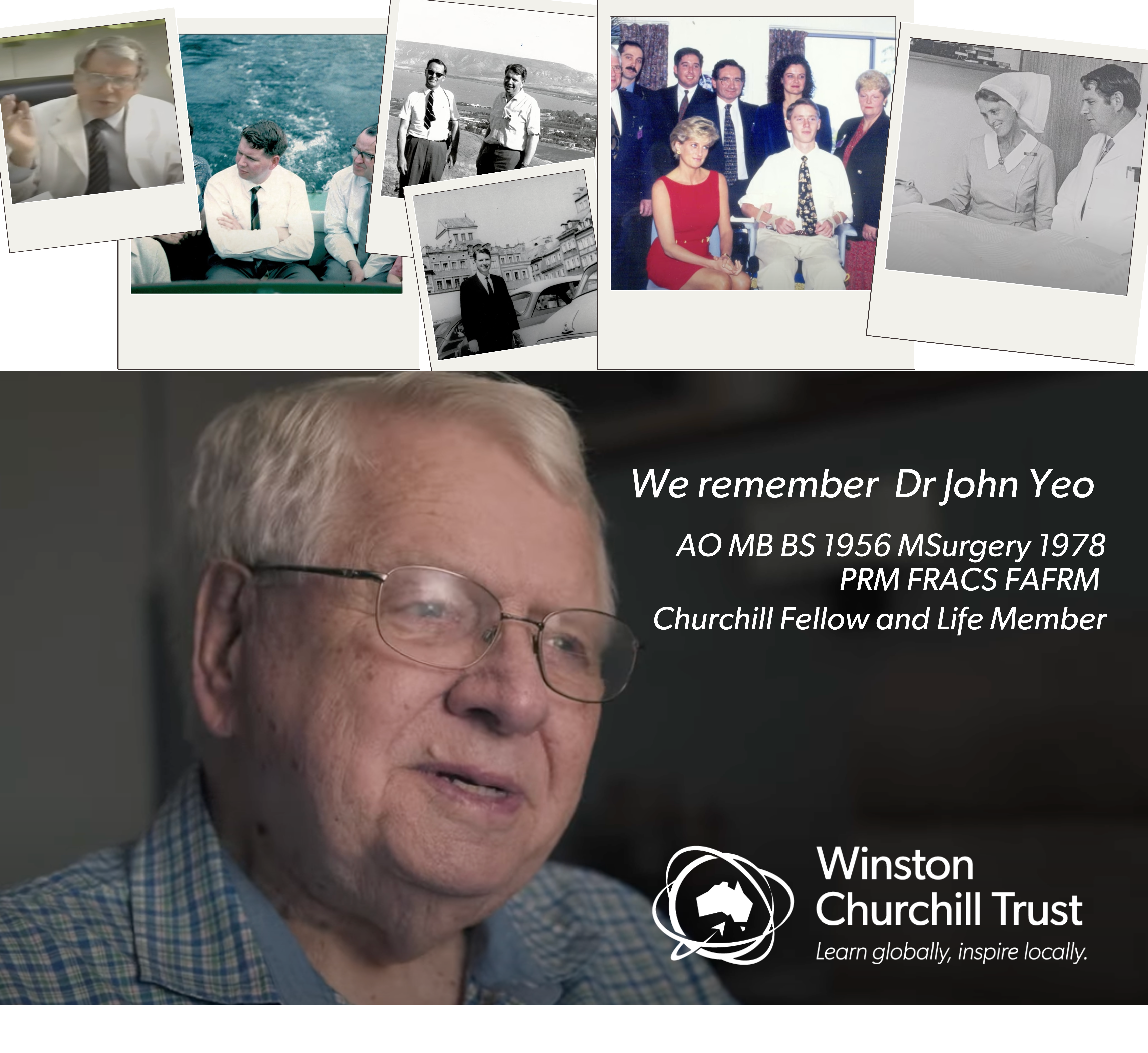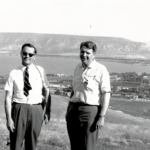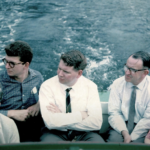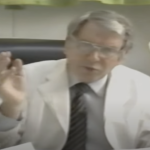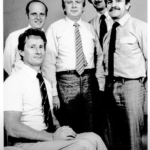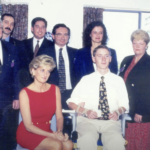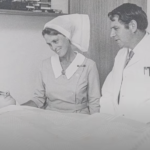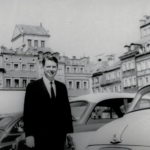The Churchill Trust was saddened by the passing of Dr John Yeo, Churchill Fellow and Life Member of the Trust.
We remember Dr John Yeo AO MB BS 1956 MSurgery 1978 PRM FRACS FAFRM
“These people demanded good and helpful medicine and what’s more, when they did get it, life was worth living in an amazing way, and we had still to prove that here in Australia, so we we took up the call.” – Dr John Yeo 2022.
Sharing the Journey | Dr John Yeo
This short video was produced by Sydney film-maker Hugh, who documented Dr John Yeo’s story including when he joined the Spinal Injuries Unit at the Royal North Shore Hospital in Sydney in 1964.
‘I can’t remember when I didn’t want to be a doctor,’ said John Yeo in a 2014 oral history interview.[1] Born in Dubbo in 1933, John came from a family who were not very well off. In spite of this, his parents were supportive of his goal. However, a high school teacher told him: ‘You’ll never be a doctor, Yeo.’
John Yeo was glad to prove his teacher wrong by graduating from Sydney University’s Medical School after supporting himself through his studies by becoming ‘an expert at putting in septic tanks’ in university holidays.
In the same oral history interview he said that working in Casualty opened his eyes to the realities of what people go through: ‘tragedy, accidents, injuries – as well as the joy of delivering a baby …’ During these residencies at Sydney’s Royal North Shore Hospital he developed ambitions to be a surgeon. After paying for passage overseas on a large cargo ship by being the ship doctor (and dentist – he joked that ‘sick parades fell to almost nothing!’) he arrived in England, enthusiastic about gaining some surgery experience.
At Southland Hospital near Brighton he had the opportunity to work on the newly developed artificial hip. Before this, patients with a pin in their hip had to lie in bed for six weeks. He then travelled to Saskatchewan in Canada as a locum for a year, returning to the Royal North Shore Hospital in 1964 where he became a leader in the prevention and rehabilitation of people with spinal injuries.
In 1967 John was one of the first people to be awarded a Churchill Fellowship. This enabled him to travel to eleven countries to study improved methods of caring for patients with spinal injuries. He was concerned about the increase of these injuries in Australia as in the rest of the world and he was passionate to do something about it.
In those days, he said, paralysed people were in a dire state, left lying there waiting to die and prey to complications resulting from not being moved, but in some overseas countries new developments were stirring. He said that he felt on the brink of a new era and he wanted to be part of it. The Churchill Fellowship, he said, was ‘this incredibly beneficial thing that took me to the spinal units in hospitals of many countries. I met some wonderful people …’[2]
One of these people was Mary Verghese (1925-1986). She was an Indian physician and one of the earliest pioneers in rehabilitation. A car accident had left her a paraplegic but she persevered in working, engaging with patients from her wheelchair. She also developed an industry that the disabled could work in: making sandals from old tyres.
Mary Verghese gave John the idea that buildings ought to be made accessible for people in wheelchairs. These developments were not in Australia at the time and John helped to campaign for them, pointing out that these improvements would also help ‘the old, the infirm, the very young, the pregnant, who also need easy access’.[3]
On his Churchill Fellowship John also visited France, Poland, Germany, Italy, Switzerland, Israel, the UK, Ireland, the United States and Canada. He met many specialists and their patients and gathered a wealth of innovative information and techniques, which inspired him to improve Australia’s practices regarding spinal injuries.
After returning from his Fellowship he became Medical Director and Head of the Spinal Unit at the Royal North Shore Hospital, in 1968. The experiences overseas had inspired him to make some improvements. In coordinating a team of medical staff he knew that a good team is made from good communication and mutual respect. Communicating with the patients is very important too, plus John wanted to make sure that injured patients were given access to psychological care as well as physical.
He developed the Awareness and Prevention Program for Schools where teams, including some former patients of his, visit schools to raise awareness of the dangers of car accidents, football scrums and diving in shallow water. His work with schools also involved raising awareness of safer ways for school children to carry heavy loads of books and bags, which have a great risk of damaging young spines. He was Director and Chairman of the Program. Thanks to John’s initiatives the incidence and degree of spinal injuries has diminished in areas like Rugby League tackles and in motorbike accidents.
John was involved in postgraduate teaching of medical and nursing students, as well as physiotherapists, occupational therapists, social workers and ambulance officers. He lectured university students from Faculties of Arts and Education, spreading the message about prevention of spinal injury.
John founded the Spinal Research Foundation in 1976 and he was Medical Director and Head of the Spinal Injuries Unit until 1992. Concurrently since 1988 he was the Medical Director of the Moorong Spinal Unit at the Royal Rehabilitation Centre in Ryde, Sydney. John was also involved in outreach practice: over the years he visited hospitals in Nairobi, Singapore, Shanghai, Honiara, Port Moresby, Goroka, Mt Hagan, Sopas, Lai, Bougainville, Kenya, China, Fiji, South Africa, the Solomon Islands, France, Japan and Noumea to advise and treat patients with spinal cord injuries.
John remains an Honorary Medical Officer to the Spinal Injuries Unit at the Royal North Shore Hospital and a Rehabilitation Specialist at Dalcross Private Hospital.
He was Chair and Director of the New South Wales Regional Committee of the Churchill Trust from 1983 to 1993 and Deputy National President in 1994. John Yeo was appointed a life member of the Churchill Trust in 1994.
Following a generous donation in 2022, The Dr John and Mrs Joy Yeo Churchill Fellowship is awarded to support research that improves understanding of the changing cellular pathology following spinal cord injury within 48 hours of the initial impact.
A short video was produced by Sydney film-maker Hugh, who documented Dr John Yeo’s story. When Dr Yeo joined the Spinal Injuries Unit at the Royal North Shore Hospital in Sydney in 1964, patients had a poor quality of life. In his three decades at the Unit, Dr Yeo he oversaw incredible change for victims of spinal paralysis. But the enduring incapacity to cure these types of injuries continues to haunt medicine, and made Yeo’s job as a carer extremely challenging. John was quick to humbly acknowledge that he was only a small part of the Spinal Unit’s experience, but his story and contribution is nevertheless incredible.
[1] Australian Centre for Paralympic Studies oral history project interview by Caroline Evans, 18-19 September, 2014
[2] ibid
[3] op cit
